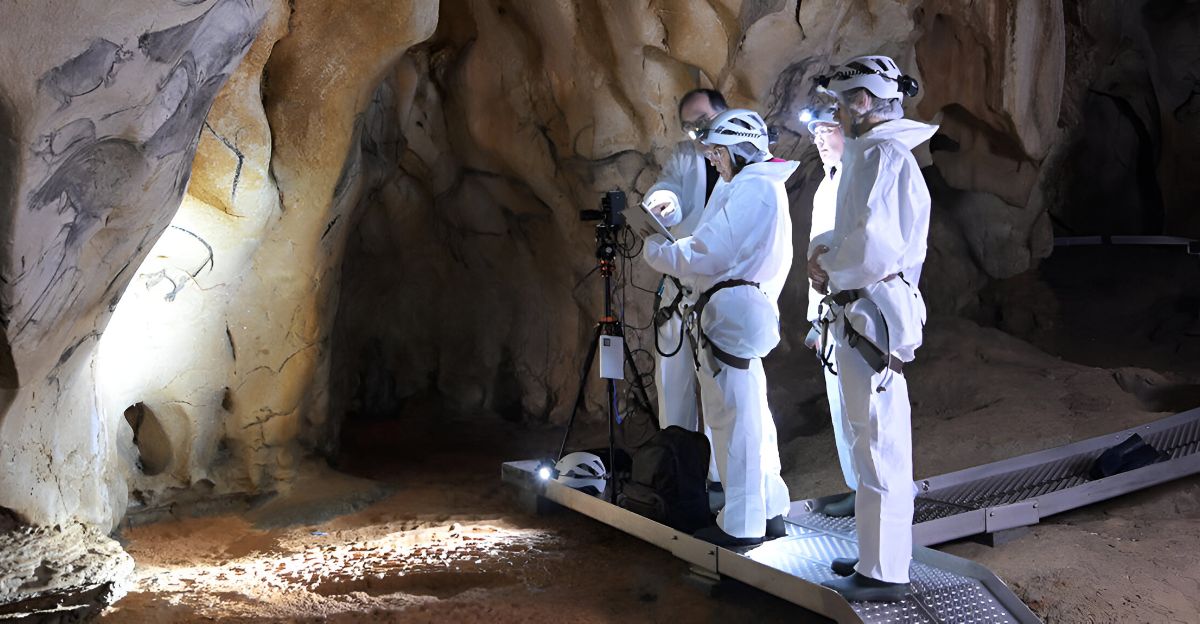
Cavemen and women have been part of stories for as long as time can tell, and the mystery surrounding their lives still fascinates us to this day. Hidden beneath layers of sand and sediment for over 40,000 years, Gibraltar’s Vanguard Cave has turned out to be a time capsule that would tell a story of people thousands of years ago.
The remarkable discovery within the cave was preserved extremely well due to a sand dune that sealed off the cave. What wonders will this cave hide within its walls?
Discovery of the Sealed Chamber

Since 2012, archaeologists from the Gibraltar National Museum have suspected that hidden passages or chambers, plugged by ancient sediments deep within the cave, might exist. Their persistence paid off when, after years of careful digging, they uncovered a 13-meter-long chamber at the very back and on the cave’s roof.
This space had been completely sealed off by sand and sediment for at least 40,000 years, untouched by humans or animals since the time of the Neanderthals. Researchers found remains of lynx, hyena, and griffon vulture, as well as a large sea snail shell showing that something had carried it up from the distant coast. “You literally have to crawl in. But once you’re inside, you can actually stand up just about … six feet tall,” said Clive Finlayson.
The Vanguard Cave Complex
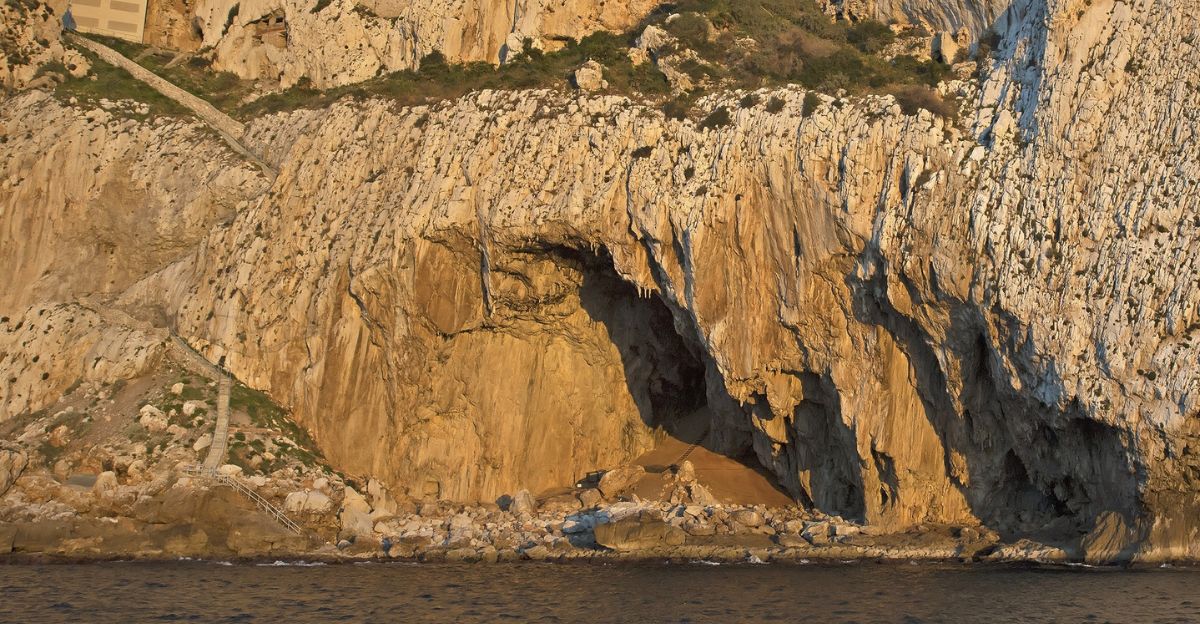
This remarkable cave has been a UNESCO World Heritage Site since 2016. Together with Gorham’s, Hyaena’s, and Bennett’s Caves, it forms the Gorham’s Cave Complex. “These caves have this habit of almost making you feel the presence of the people who were there before you,” said Finlayson, director of the Gibraltar National Museum.
Vanguard Cave itself is especially significant for preserving deep archaeological layers that reveal the behaviors, diets, and technologies of Neanderthal communities, including the earliest evidence of marine food consumption by Neanderthals.
Geological Formation and Sealing

What makes Vanguard Cave so remarkable is its geological formation and eventual sealing. Over tens of thousands of years, the cave accumulated more than 17 meters of sediment, primarily composed of coarse-to-medium sands interspersed with layers of silts and clays.
This continuous sedimentation process began after the last major sea-level highstand, with aeolian (wind-blown) sands from nearby coastal dunes gradually filling the cave and eventually sealing it completely around 43,000 years ago. “As we start excavating the chamber, that’s going to become a lot bigger because we are at the very top of the cave,” Finlayson explained. “Imagine what’s going to be under there.”
The Neanderthal Inhabitants
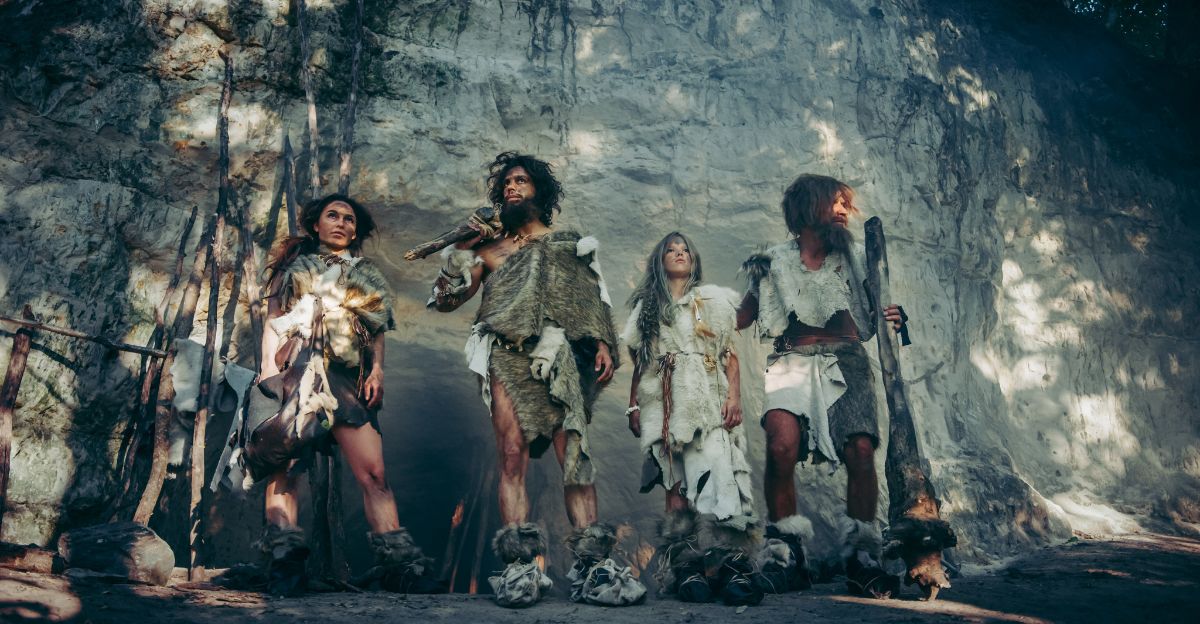
Evidence from the cave reveals that Neanderthals systematically exploited terrestrial and marine resources, making Vanguard Cave the first site to show that Neanderthals consumed a wide range of marine foods, including shellfish, seals, dolphins, and fish. Archaeologists have uncovered hearths, layers of ash, and concentrations of mussel shells alongside Mousterian stone tools and knapping debris, showing just how advanced these civilizations were.
“We found the milk tooth of a 4-year-old Neanderthal close to the chamber four years ago,” he said. “We reckon [the milk tooth] was probably hyenas dragging the child up there because there’s no evidence in that area of actual occupation. So it’s all pointing toward Neanderthals having been around both outside and now just inside that chamber.”
Living in a Sealed Environment

The cave’s natural architecture, combined with the gradual infilling and eventual sealing by wind-blown sands, created stable conditions that protected the inhabitants and their activities from external threats and environmental fluctuations. More than enough remarkable finds have been made within the cave to establish that human inhabitants lived within these walls, but there has been no sign of burial sites so far.
“Of course, you know, if we’re excavating the kitchen and the dining room and the bedroom, you’re not going to find the dead people there. So maybe in the back chamber like this, I’m speculating at the moment, maybe we could find some evidence of that. And it would go a long way again towards showing the humanity of these people.”
Tools and Technology
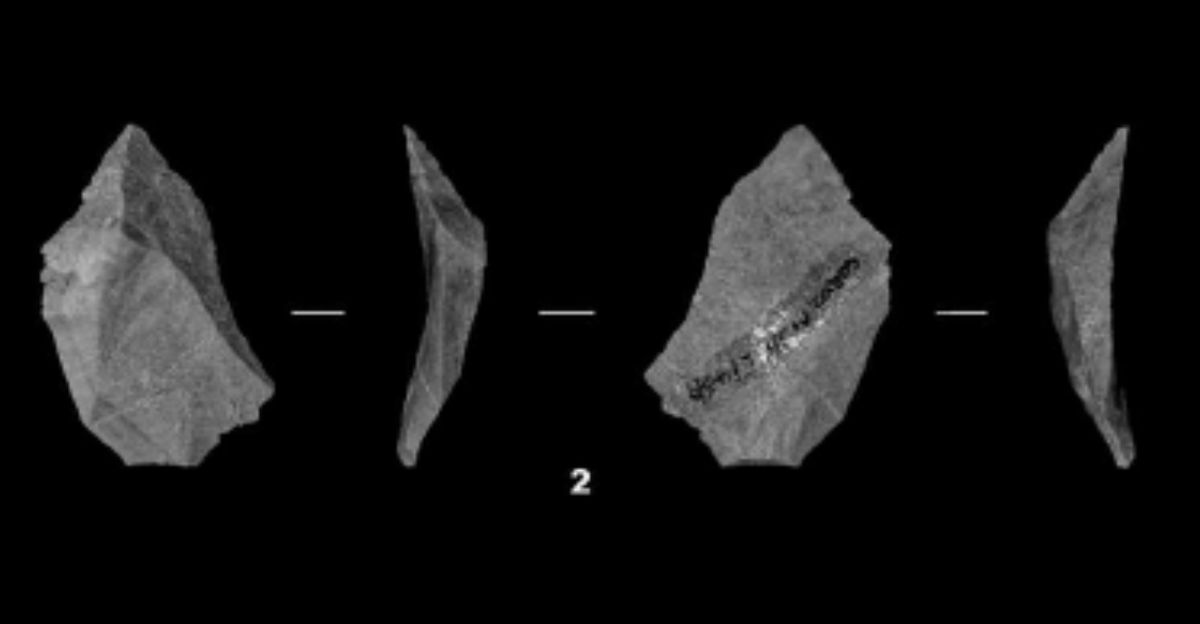
These ancient communities might have known a lot more than we might think they did. Archaeologists uncovered a carefully engineered pit with vertical walls and small trenches designed to control airflow and temperature, crucial for producing tar from resinous plants like rockrose in low-oxygen conditions.
They were skilled hunters, toolmakers, and inventors capable of doing the unthinkable, even for their period. They set the stage for modern humans, and these findings show just how advanced they truly were.
The Tar-Making Hearth

Deep within the cave, researchers found a round pit with sharply cut vertical walls and two short trenches that were used to make tar. Neanderthals ingeniously layered guano and sand over the plant material to prevent it from catching fire, enabling the extraction of sticky tar without completely burning the leaves.
Chemical and microscopic analyses of the hearth revealed residues of rockrose wax, ash, charcoal, and even traces of zinc and copper, all confirming the deliberate and complex process involved. “Our colleagues found that managing the fire and extracting the tar required two individuals working together,” said Dr. Luis Ochando.
What They Used Tar For

Neanderthals in Vanguard Cave used tar as an adhesive for hafting stone tools onto wooden handles, transforming simple stone flakes into effective weapons and hunting implements. Making tar allowed them to make spears for hunting large game or protect them against predators.
“The results are highly significant in that they reveal complex levels of cognition in Neanderthals, indicating that they understood the plants that they needed to select and the complex industrial process required in order to manufacture tar,” said the British Overseas Territory’s Gibraltar National Museum.
Their Unique Diets

These ancient communities had a pretty good diet with a lot of options available. Archaeological evidence from the cave reveals that these ancient people regularly feasted on animals like ibex, red deer, wild boar, and bears but also marine resources like mussels, limpets, sea urchins, fish, monk seals, and even dolphins.
Hearth sites within the cave contain layers of ash mixed with marine shells and butchered animal bones, some bearing cut marks from flint tools. These indicate that Neanderthals actively hunted, collected, and processed land and sea foods.
Evidence of Social and Ritual Life
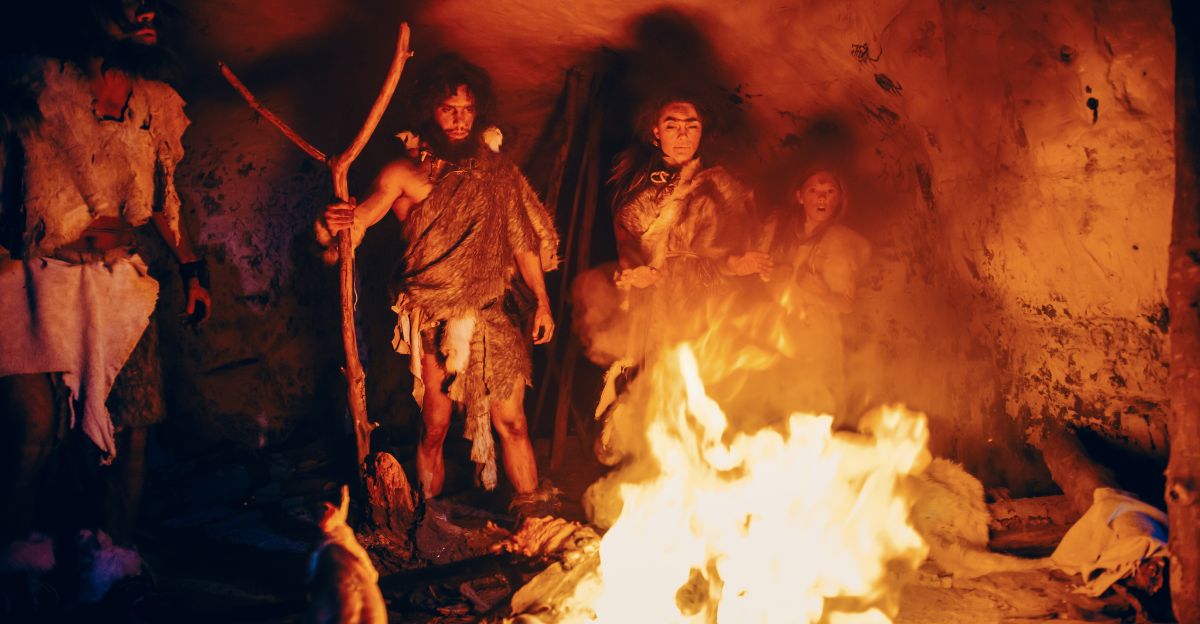
These ancient people did a lot more than survive in cave environments. They had designated hearths for communal gatherings, tool-making areas, and zones for food processing, showing their sense of community. Layers of ash from hearths reused over successive periods suggest that these fires served practical needs for warmth and cooking and as focal points for group activity.
Art and Ornamentation
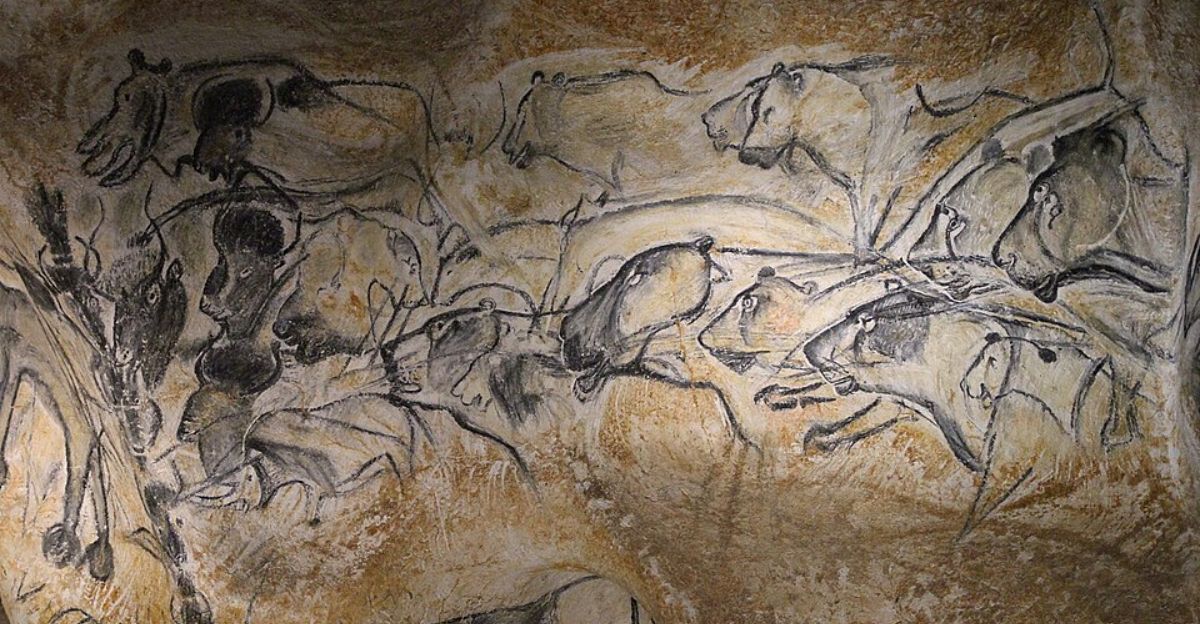
In Gorham’s Cave, researchers found a deliberate abstract engraving carved into bedrock more than 39,000 years ago. This shows these Neanderthals’ understanding of symbolic expression and abstract thought, once considered exclusive to modern humans. Neanderthals also created personal ornaments when they collected and painted shells, likely using them as jewelry or symbolic objects, and fashioned eagle talons into necklaces or amulets.
Implications for Human Evolution

The recent discoveries at Vanguard Cave have profound implications for our understanding of human evolution, challenging long-standing assumptions about the cognitive and technological abilities of Neanderthals. Genetic research has further revealed that Neanderthals and modern humans interbred, leaving a legacy of Neanderthal DNA in nearly all non-African populations today. These communities were far more advanced than we once thought, showing how intertwined we genuinely are.
The Neanderthals’ Grotto

Located in a remnant sea cave just north of Vanguard Cave, this newly named site is the first in Gibraltar to carry the Neanderthal name explicitly, showing the importance of the people who first made the Rock their home. The Grotto has quickly become a treasure trove for archaeological research. This site had some of the most beautifully crafted stone tools, a large number of marine shells, and enigmatic finds like a raptor skeleton and a massive deer antler.
The Ongoing Legacy of Vanguard Cave
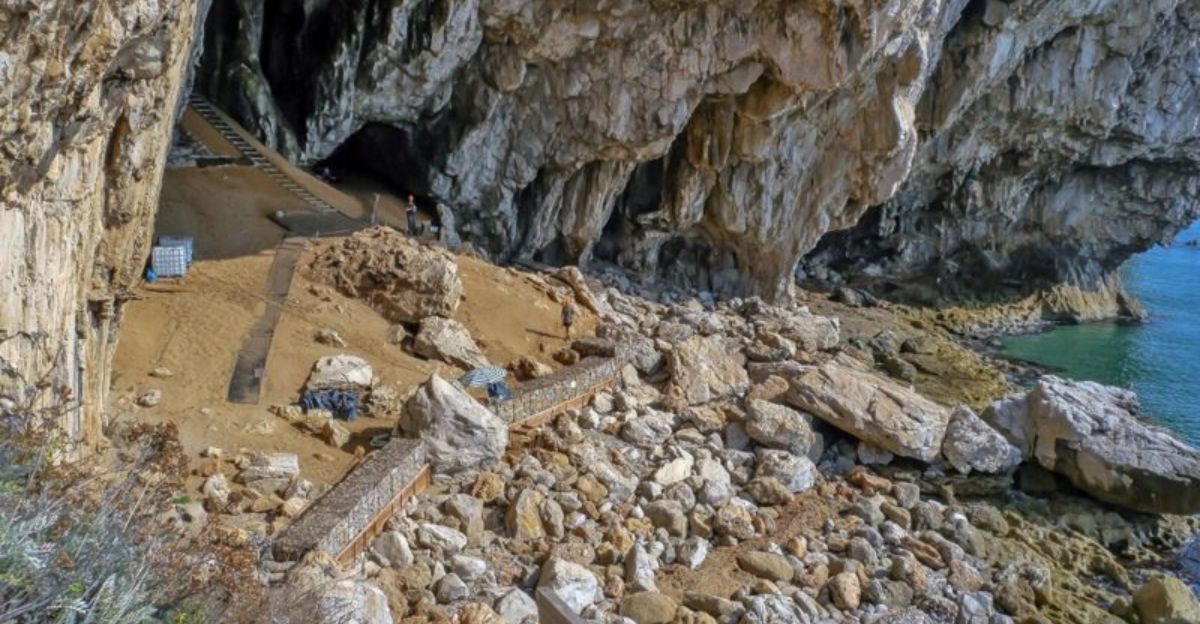
This cave has far more to offer researchers as they move deeper and deeper into the cave, uncovering new secrets every time. The recent unsealing of a hidden chamber, untouched for over 40,000 years, has renewed international attention and excitement. Experts can’t wait for more groundbreaking finds that could shed light on the social, symbolic, and possibly even ritual practices of these ancient people.
Explore more of our trending stories and hit Follow to keep them coming to your feed!

Don’t miss out on more stories like this! Hit the Follow button at the top of this article to stay updated with the latest news. Share your thoughts in the comments—we’d love to hear from you!







